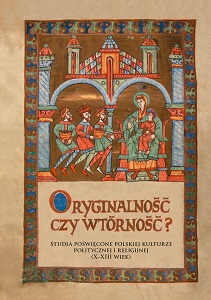Oryginalne czy wtórne? Fundacje klarysek małopolskich a ideał klariański u ich zarania
Originality or imitation – Clarian monastery foundations in Lesser Poland and the Poor Clare ideal at their beginning
Author(s): Anna Agnieszka Dryblak
Subject(s): Middle Ages, 6th to 12th Centuries, 13th to 14th Centuries, 15th Century
Published by: Wydawnictwa Uniwersytetu Warszawskiego
Keywords: medieval history; church history; Christianity in the Middle Ages; religious culture; Poland during the Piast dynasty
Summary/Abstract: The first Polish Poor Clare communities appear on the initiative of the Piast dynasty in Lesser Poland and in Silesia, but they are of a different character. Unlike the Wrocław convent, the foundations established in Bolesław the Chaste’s circle are envisioned as dynastic foundations of traditional form almost from the very beginning. The convent in Zawichost to a large extent draws on the Prague model; however, after the convent is moved to Skała, Salomea obtains an exemption from the rule of poverty from the pope, and she soon receives more possessions from the ruling family, and later bequeaths all her goods to “her convent.” Meanwhile, the Stary Sącz convent, founded by Kinga after the death of her husband, from the very beginning is treated as a traditional, lavishly endowed family foundation, and it constitutes the centre of the widowed duchess’s dominion, playing an important role in her political conflicts with Leszek the Black. The attitude of the female members of the dynasty towards the Poor Clare ideals is also unusual. Both Salomea and Kinga join the nuns of the convents founded by them. They do not perform the function of abbesses, calling themselves “sisters” instead. This did not, however, mean that they had to renounce their material goods, and sometimes it seems to have strengthened their position in relation to other members of the family. It is an exceptional example, befitting Ottonian realities of canonical foundations rather than times of triumphant mendicant ideals.
- Page Range: 654-724
- Page Count: 71
- Publication Year: 2020
- Language: Czech, Polish
- Content File-PDF

